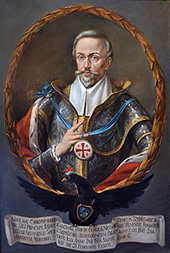
Mikalojus Kristupas Radvila Našlaitėlis, founder of Vilnius Academy printing house
16th-18th c. The present-day Vilnius University Press was opened in 1575 as the printing house of Vilnius Academy. It was established by nobleman Mikalojus Kristupas Radvila Našlaitėlis (Mikołaj Krzysztof “The Orphan” Radziwiłł), who delegated the management of the printing house to the Jesuits. In the 16th century the Radvila family were in possession of two printing houses: one in Nyasvizh and the other in Brest. The latter was relocated to Vilnius. The exact location of the printing house is unknown. Most probably it was situated in Lukiškės, next to the Radvila manor. Later it could have been relocated to Šv. Jono Street. In May of 1576 the first publication – Petras Skarga’s (Piotr Skarga) book Pro Sacratissima Eucharistia contra haeresim Zwinglianam (For the Most Sacred Eucharist, against the Zwinglian Heresy) was published at Vilnius University Press.
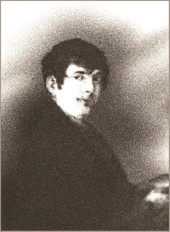
Typographer, Juozapas Zavadskis, founder of Zavadskis’ press shop and publishing house
In the 16th century book publishing was rather simple due to unsophisticated printing equipment and small inventory. The 17th century saw an expansion of the printing house activities and an increase in the number of employees. It was the period when the most valuable scientific books of the time were published. The economic situation of the Academy’s printing house was exceptional as compared to privately-owned presses – its activities were funded by both the secular society and the Church as well as sponsored by Mikalojus Kristupas Radvila Našlaitėlis himself. Printing house rules dating back to 1597 state that he donated 1000 gulden for letter moulding and improvement of other printing house activities.
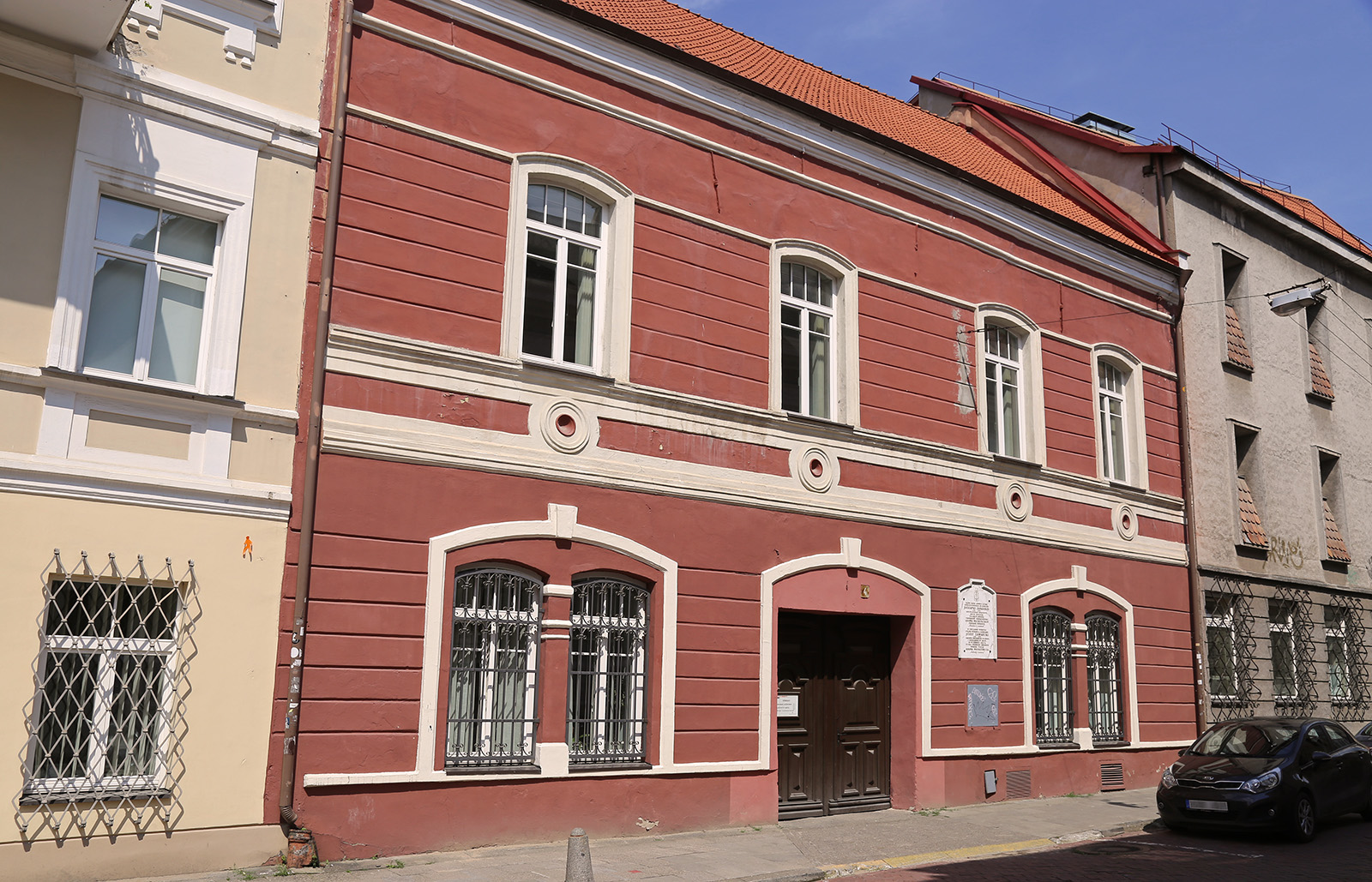
Building on Šv. Jono Street where Juozapas Zavadskis’ press shop was located
In the mid-18th century the printing house expanded its activities to the national level with more than 50 publications a year. However, censorship, which monitored the content and distribution of books and their publication in general, was a serious obstacle impeding the operation of the printing house. In fact, the printing house managed to publish several uncensored publications. Public life as well as reforms in the Academy resulted in the printing house printing a wide variety of publications with constantly increasing numbers.
The printing house of the Academy was engaged in the publication of both scientific literature and fiction. Scientific literature included research publications in various scientific fields, textbooks, dictionaries, popular science publications, etc. Beside poetry and prose, fiction also included various occasion-related works as well as didactic and Greco-Roman literature. Taking into consideration the conditions of that time, the said publications put the printing house of the Academy alongside the most productive printing houses of Western Europe; even more so as a dozen of publications in Greek, Italian, French, and German were printed there.
19th-early 20th c. Following the abolition of the Jesuit Order, from 1773 the printing house was owned by the State Treasury, from 1785 it became part of the Principal School of Lithuania which was established in place of the Academy and in 1803 renamed into Vilnius University. Vilnius Academy continued its activities until 1805. At that time the printing house was purchased by Juozapas Zavadskis (Józef Zawadzki) who became the typographer of the Imperial University. J. Zavadskis established the largest and most advanced book store in Vilnius which already in 1809 was renowned for the range of Polish books it had to offer. The printing house was the best and the largest publisher of Lithuanian books in the mid-19th century Lithuania and with short interruptions was in operation until 1940 when it was nationalized, though the period of the press ban (1864-1904) was the hardest time. In 1866 a number of books in the Lithuanian language were discovered in Zavadskis’ printing shop, therefore, following the decree of the Governor General, its activities were suspended until 1869. Starting with 1869 the printing shop resumed operation and printed 10-20 publications annually, mostly in Polish, at times also in Russian and Latin.
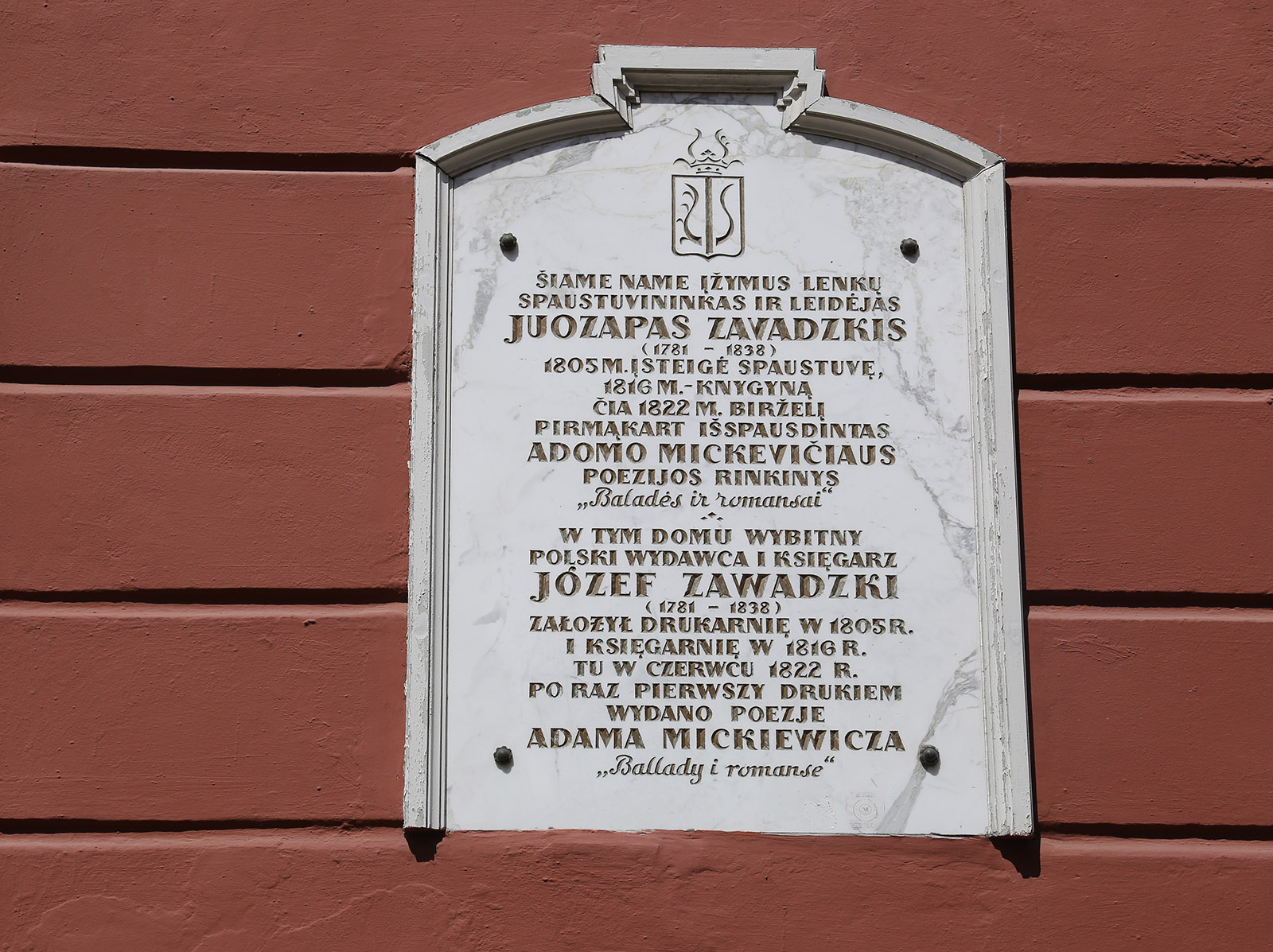
Commemorative plaque on the building on Šv. Jono Street where Juozapas Zavadskis’ press shop was located
After the ban was lifted in the beginning of the 20th century, the start of the national revival resulted in a great demand for books in the Lithuanian language which allowed Zavadskis’ printing house to accelerate its activities and become the most productive printing house in the early 20th century. In 1909 a rotogravure printing machine and the first linotypes were introduced in Zavadsks’ printing press which allowed to abandon manual typesetting. In 1913 the printing shop was in possession of 12 presses and two linotypes and employed 50 people. It would print around 30-40 books and several periodicals each year. The Zavadski family also opened a bookshop with a department of Lithuanian publications. As Vilnius became part of Poland, Zavadskis’ printing shop continued its operation until 1940 when, following the Soviet occupation of Lithuania and Vilnius, the printing shop, together with other publishing offices and book stores, was nationalized and handed over to the editorial office of the Tiesa daily. During the Nazi occupation of 1941–1943, Vilnius University published 11 scientific publications, mostly printed by “Švyturys” press in Vilnius. After the Soviet reoccupation of Lithuania, in 1955 the editorial office of Tiesa was merged with the Sovietskaja Litva printing house and though the new enterprise was named the Central Committee of the Communist Party of Lithuania Printing House of Magazines and Newspapers, it also provided book printing services. The available information suggests that in 1960 the Soviet Lithuanian Government granted Vilnius University Press the right to publish educational literature and materials of academic conferences.
First half of the 20th-early 21st c. Until 1990 the present-day Vilnius University Press was in operation as the editorial-publishing division of Vilnius University. Several years after the restoration of Lithuania’s independence, on 19 May 1997, Vilnius University printing house was reorganized into a limited liability company “Vilnius University Press”. In 2003 its legal status was changed into public institution. In 2011, following a reform, the company was split into two printing houses: VšĮ “Akademinė leidyba” and “Leidybos direkcija”, the latter being a division of Vilnius University. As of 2017 this division of Vilnius University has been in operation under the name of Vilnius University Press.
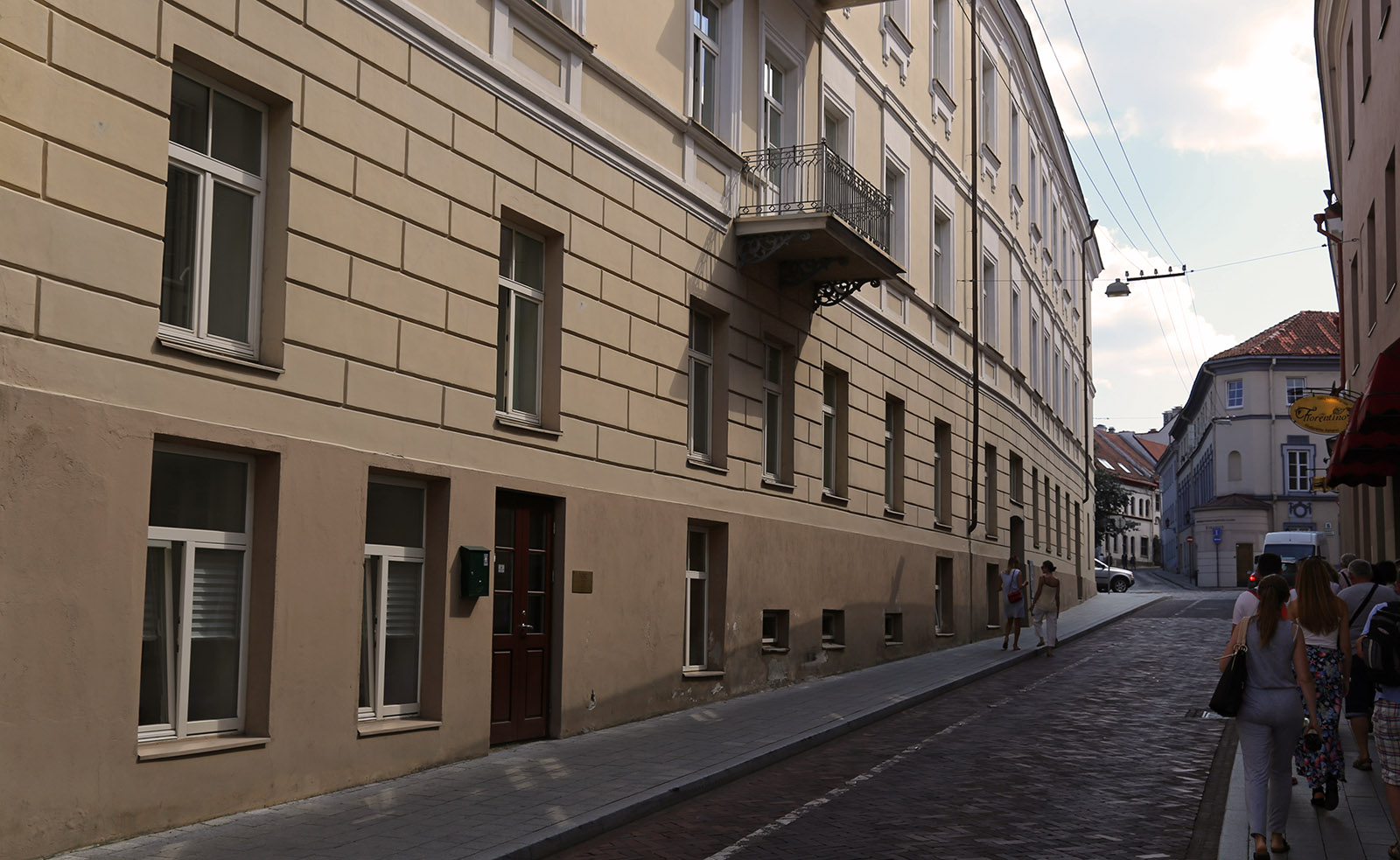
Present-day premises of Vilnius University Press at Universiteto str. 1, Vilnius
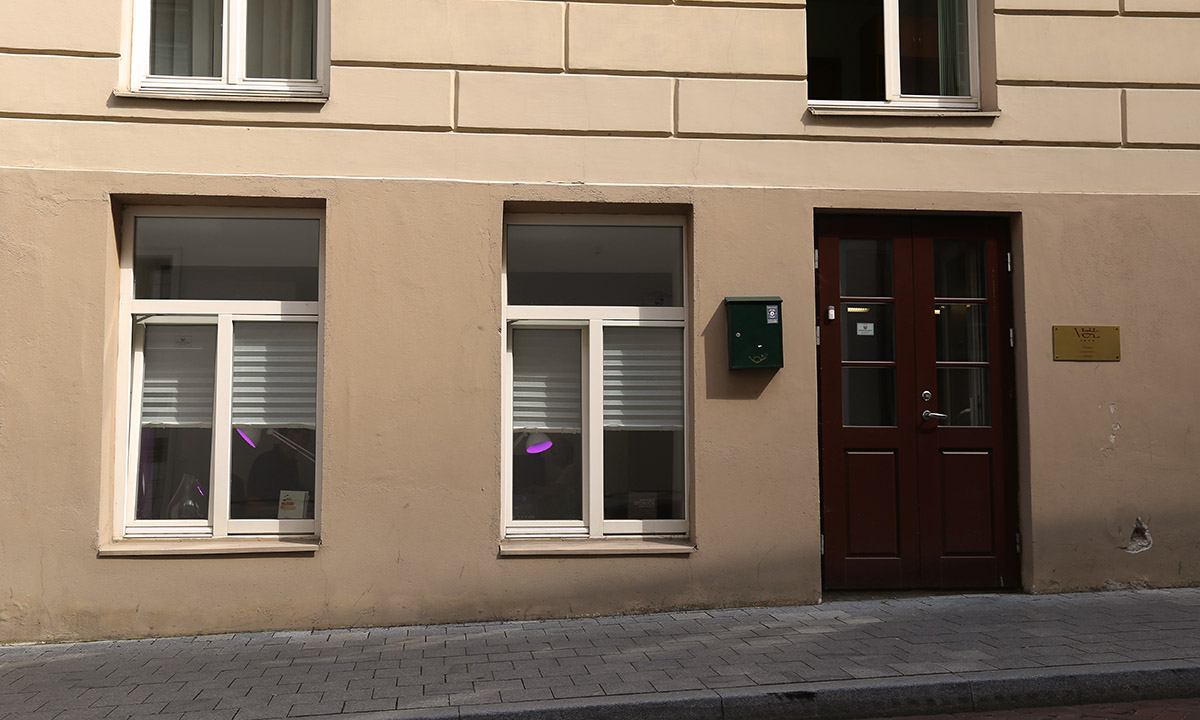
Entrance to Vilnius University Press at Universiteto str. 1, Vilnius
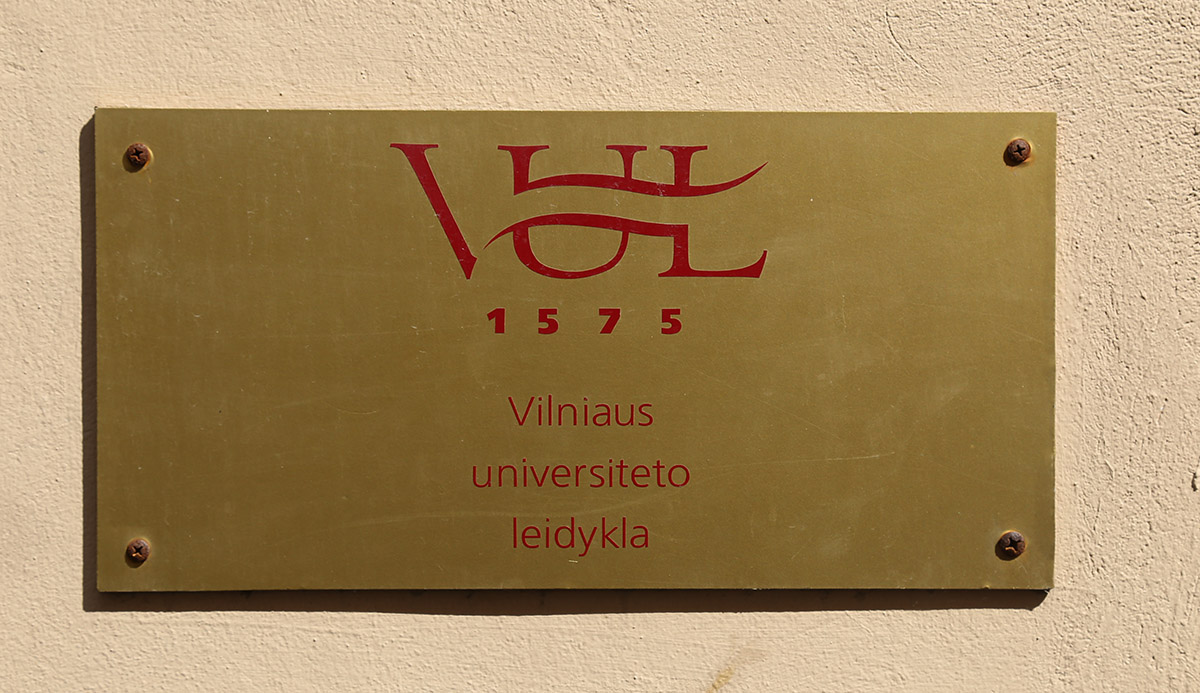
Information sign of Vilnius University Press
For more information on the publishing house and its history see Wikipedia.
Sources:
- Petrauskienė, Irena. Vilniaus akademijos spaustuvė 1575–1773. Vilnius: Mokslas, 1976. 248 p.
- Stonienė, Vanda. Lietuvos knyga ir visuomenė: nuo spaudos draudimo iki nepriklausomybės atkūrimo. Vilnius : Versus Aureus, 2006.
